The 7 Largest Birds on the Planet: Where Does the Ostrich Rank?
When you think of a bird, you probably don’t imagine an animal much bigger than your hand. Or, if you’re imagining a bird of prey or raptor, you probably see an amazing wing span paired with a still relatively small body. Well, my friend, not all birds are so small: in fact, some are likely bigger than you! These amazingly thicc birds are some of the most fascinating in the world and deserve a closer look, especially if you’re interested in traveling to see them any time soon.
Common Ostrich: A Bit of a Beefcake!
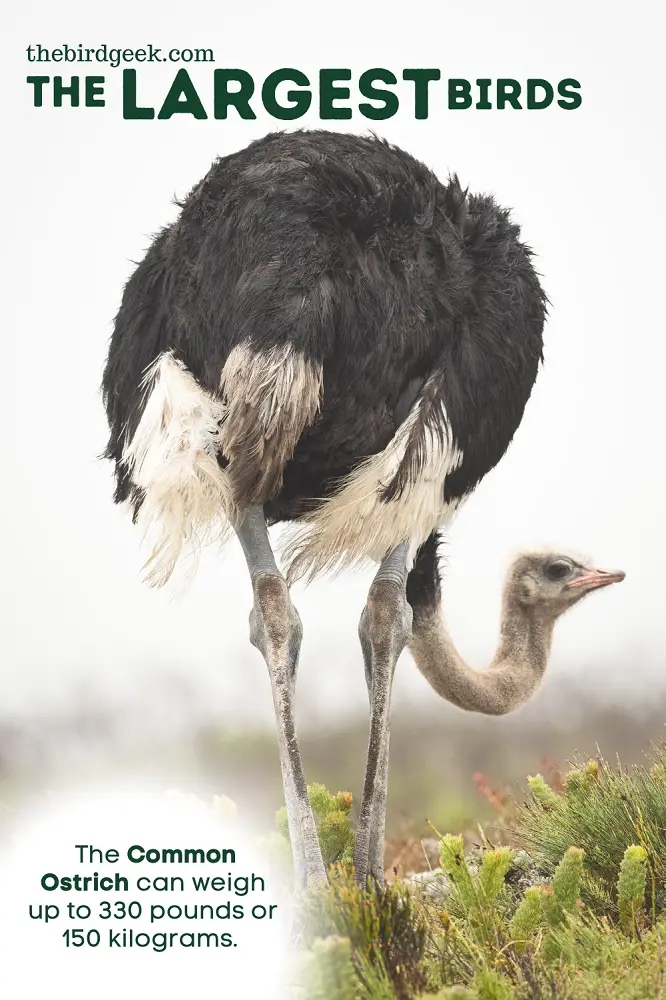
The flightless African ostrich is a fascinating bird not only for its unique look and speed but its pure size. The male ostrich may grow close to seven feet or 210 centimeters. They can weigh a rather beefy 330 pounds or 150 kilograms, though the female ostrich averages a bit smaller.
In spite of its beefiness, the ostrich is also very fast and can run up to 45 miles or 72.5 kilometers per hour! That’s because this bird has incredibly strong legs that not only help them run fast but deliver devastating kicks that can be deadly to humans. Note: ostriches do not, we repeat, do NOT put their heads underground when scared: that’s a myth.
Somali Ostrich: No Lightweight!
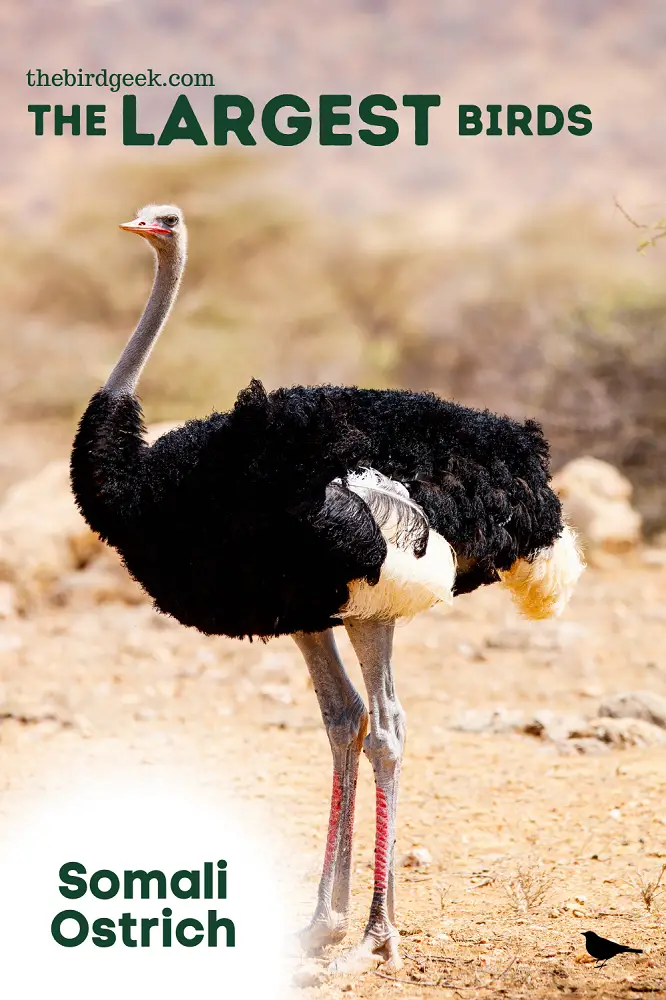
While the common ostrich is better known than the Somali ostrich, this separate flightless species is just as interesting. The Somali ostrich is located primarily in Ethiopia, Kenya, Somalia, Djibouti, and other Afrotropical areas throughout the continent. It is “vulnerable,” meaning that its population is declining and could become endangered.
They’re typically only a little bit smaller than the common ostrich and may even reach similar sizes, depending on individuals. Known as the “blue-necked” ostrich, it’s so similar to its cousin species that it can run about the same speed and is commonly mistaken for the common ostrich by visitors to Africa.
Southern Cassowary: An Impressive Australian Bird
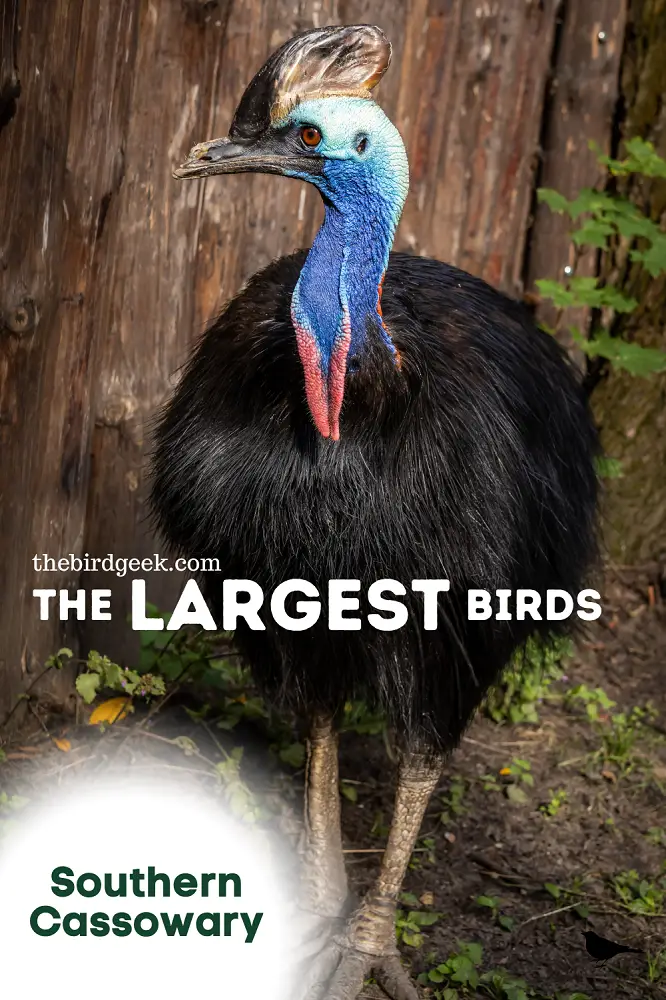
The southern cassowary is a flightless bird common in Australia, Indonesia, and New Guinea. Are you noticing that the biggest birds so far are all flightless? That’s because their large bodies make it impossible for them to have wings that are large enough to support flight. As a result, these birds become ground-bound, and their wings atrophy through years of evolution.
Though not as well-known as the ostrich, the southern cassowary is related to ostriches and belongs to the infraclass of birds, palaeognathae. Expect this dark bird with the buzzard-style face to reach heights over six feet or nearly two meters and weigh, on average, 187 pounds or 85 kilograms. If you’re in the wild and see this bird, back away slowly: they will attack humans.
Northern Cassowary: Only a Little Smaller Than Its Cousin
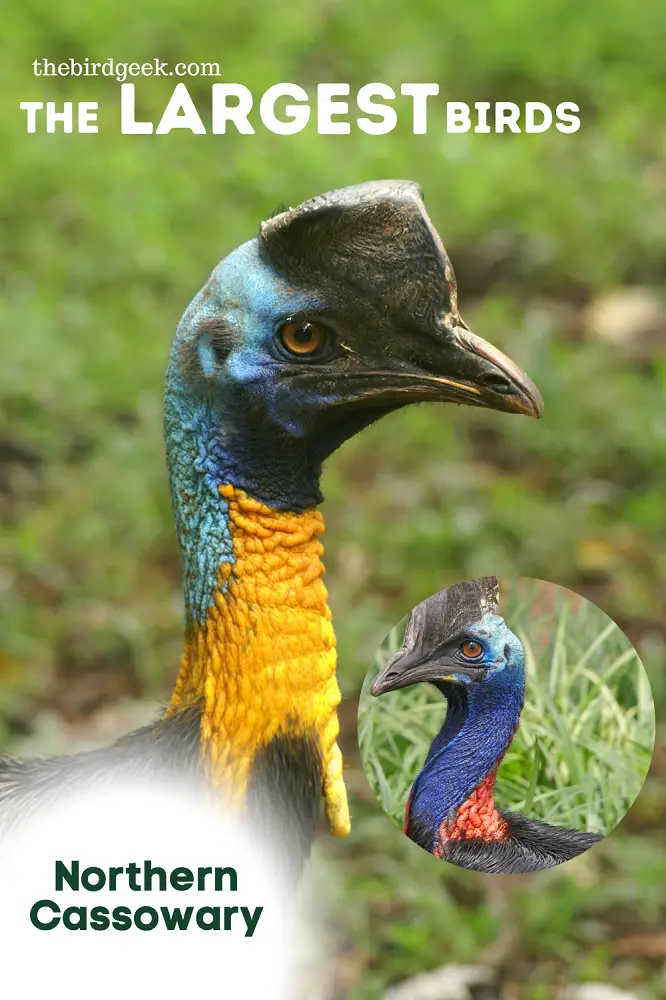
Throughout extensive studies, scientists have found that the southern cassowary and northern cassowary are about the same size. With a fairly similar look to the southern cassowary, the northern species (found primarily throughout north New Guinea and Indonesia) averages sizes of just under 4.89 feet or 149 centimeters and weights about 165 pounds or 70 kilograms at their biggest.

Like the southern cassowary, this species is known for its blue head and red neck. Other names for this species include the one-wattled cassowary or the golden-necked cassowary. Often hard to spot in the wild, the northern cassowary primarily eats berries, small animals, and fruits, though it has also been spotted eating undigested fecal matter in desperate times.
Emu: The Ostrich’s Australian Cousin

If you’ve ever seen in Australia or watched documentaries about the continent, you may have mistakenly thought you saw an ostrich when you spotted an emu. Don’t worry: you’re not alone! The emu is a direct relative of the ostrich and looks very similar to them. Known for their amazingly fast running speed (31 miles or 50 kilometers per hour), they’re widespread throughout Australia.
Typically, the emu can reach heights of about 5.02 feet on average and weigh 150 pounds or 70 kilograms at their thickest. That makes them one of the tallest birds on the planet, and, like their ostrich cousins, they cannot fly. Their tiny wings do little more than provide a little extra aerodynamic boost for their runs.
Emperor Penguin: More Than Just a Cute Cartoon Character

The emperor penguin had a huge burst in popularity after the release of the charming 2006 animated film, “Happy Feet.” However, these fascinating birds are worth knowing beyond that film! They’re the largest member of the penguin order, standing, on average, at about 3.74 feet or 114 centimeters and weighing up to 101 pounds or 46 kilometers.
However, they’re also the deepest-diving bird and can go down as far as 1,800 feet or 550 meters underwater looking for food. Their slow and even humorous on-land appearance belies their sleek and impressive swimming capabilities. Sadly, the emperor penguin is a near-threatened species that has likely lost much of its population to climate change.
Greater Rhea: Another Flightless Ostrich Cousin
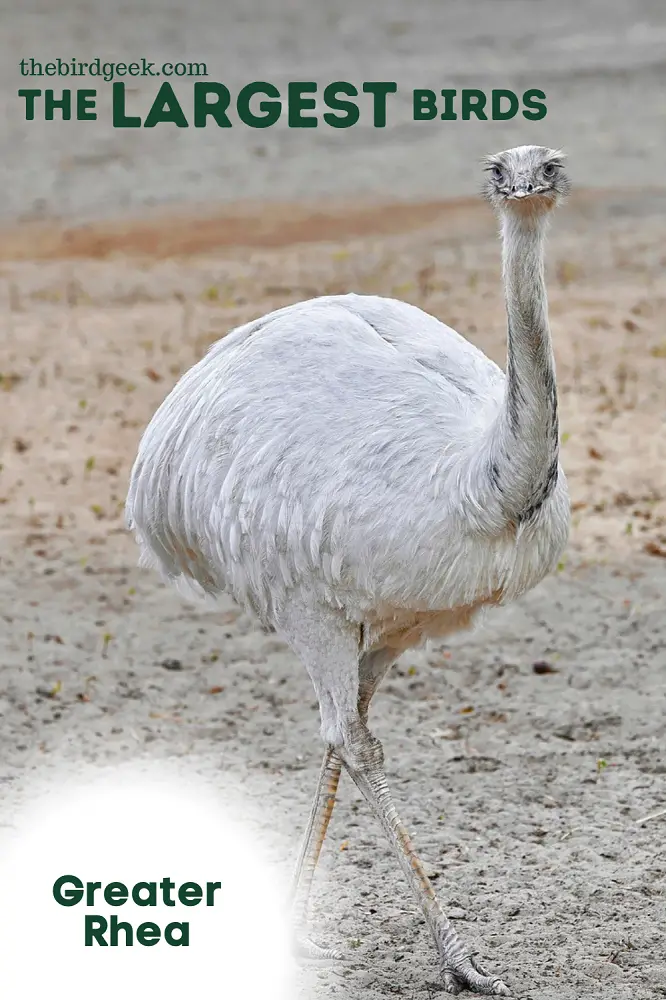
Here’s another theme you’re likely spotting on this list: birds that look like or are related to the ostrich. The greater rhea looks a lot like an ostrich but is found in South America, particularly throughout Bolivia, Uruguay, Paraguay, Brazil, and Argentina. Their long necks and legs look similar to the ostrich. They stand at about 4.4 feet (134 centimeters) and weigh up to 75 pounds or 34 kilograms.
Unfortunately, they’re considered “near threatened” because their preferred breeding grounds, grassland, and scrublands, are disappearing due to human settlement. That said, there is still a considerable population of these fascinating and beautiful birds left in the wild.
Related post: The Highest Flying Birds! (Spoiler! Some can go higher than the Everest!)
Dwarf Cassowary: Only A Runt in the Cassowary Family
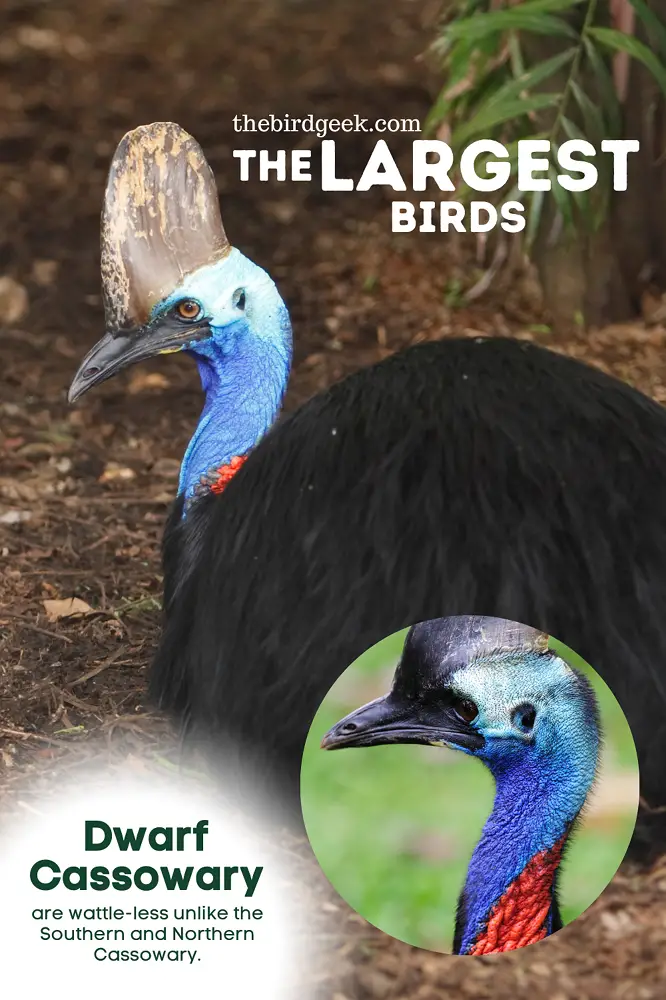
The third and last cassowary still in existence, the dwarf cassowary is the smallest of this family but still a hefty bird. They stand, on average, about 3.44 feet or 105 centimeters and can weigh up to 63 pounds or 28.6 kilograms. The dwarf cassowary is not only smaller than its cousins but lacks wattles, which makes it much easier to tell apart from the northern and southern species.
If you’re interested in spotting one in its natural habitat, you’ll have to head to Papua New Guinea and look for them throughout specific deep forests. Though their population is classed as “least concern,” they’re very secretive and hard to spot and may even attack humans if they feel threatened.
Related post: More trivia! Find out what are the Fastest Flying Birds!
